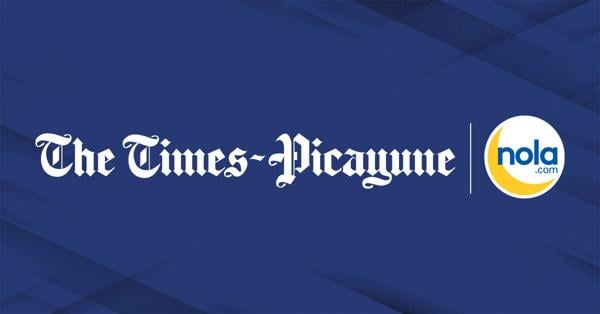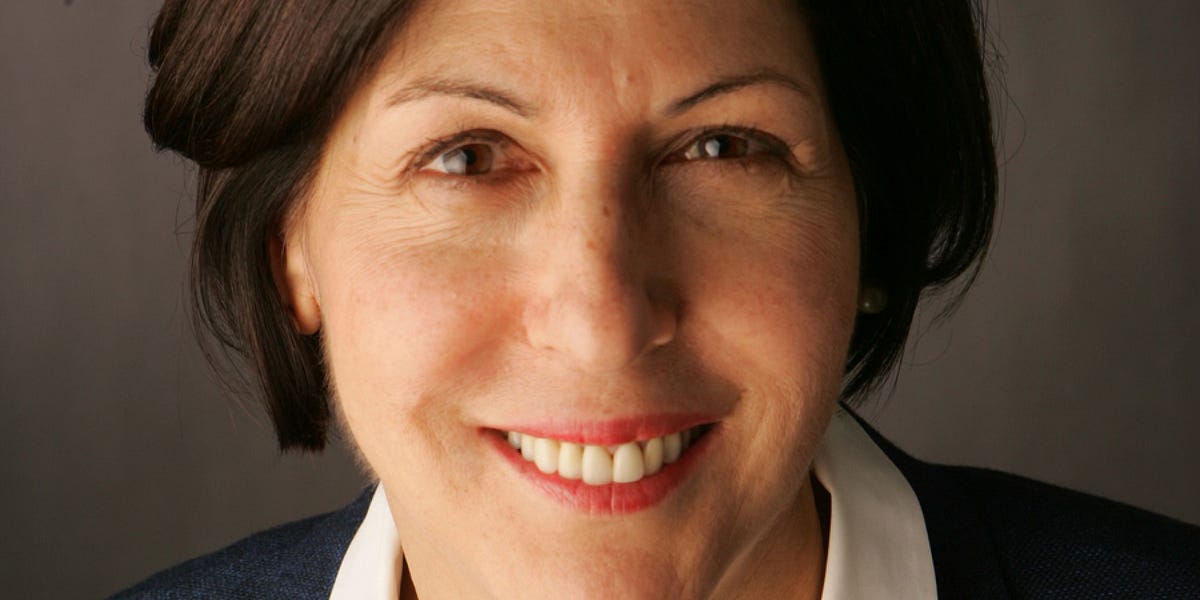Infra
On the Record: ‘If we win, we win together,’ Michael Hecht talks Super Bowl prep

In May, Gov. Jeff Landry asked GNO Inc. President and CEO Michael Hecht to coordinate infrastructure and economic development efforts leading up to Super Bowl LIX in New Orleans, Hecht sat down recently with Deputy Editor for Opinions Arnessa Garrett and columnist Stephanie Grace to talk about what residents can expect to see around town ahead of Feb. 9 — and possibly beyond. This conversation has been edited for length and clarity.
Grace: How did you fall into this role?
Hecht: It wasn’t planned, that’s for sure. But the Super Bowl has grown so much. It used to just be the game; now it’s really become a mini-Olympics. When you have a city like New Orleans that’s having to support it and compete with much larger markets, it probably becomes too significant for just the city to handle. And to Gov. Landry’s credit, he made the decision that the Super Bowl was important, not just for New Orleans but for Louisiana. And I think he saw the opportunity to come in and make sure that it’s excellent — and, frankly, also to set us up to get the next one.
Garrett: What attracted you to this position?
Hecht: What I loved about this opportunity is that it’s complicated. It’s under deadline. It’s important. And it involves broad stakeholder management, which is something that I’m comfortable with. And after being back for almost 20 years since Hurricane Katrina. I’ve built up a reservoir of relationships around the city, region and state that I thought that I could call on. But in terms of just pure feedback and enjoyment, so much of our work at GNO Inc. plays out over many years, and it’s not always easy to know whether you’ve succeeded.
When your job is to fill in a pothole or put up a mural by Feb. 9, you’re going to know whether you succeeded.
Grace: New Orleanians aren’t used to that type of success. The iconic image is not the pothole that gets filled; it’s the pothole that becomes an art project.
Hecht: It’s fun and maybe even slightly subversive to play against type by filling the pothole instead of filling it with water and having a photo shoot.
Grace: Can you explain what’s under your purview as we approach this event?
Hecht: My title is state coordinator for infrastructure and economic development; within that there are two specific areas over which I have purview. One is on the infrastructure side; we have responsibility for well over 500 individual projects, which are as large as what to do with the Plaza Tower to as small as restriping Poydras Street, that involve close to three dozen different agencies at the city, state, public and private level.
On the economic development side, our mandate is to tell the story of the economic diversity of Louisiana and go beyond just the usual ideas of food, music and Mardi Gras.
Garrett: There are a lot of other people working on overall Super Bowl preparations, including for the game itself. How do you make sure that you aren’t stepping on one another’s toes?
Hecht: When you have three dozen different organizations, each of which is trying to execute according to their mandate, it does require somebody calling the meeting and making sure that they are coordinated. And somewhat counterintuitively, the fact that GNO, Inc. doesn’t have any formal authority empowers us. All we can rely on is goodwill and the idea of the Super Bowl as a forcing function.
Garrett: Let’s talk about some of the projects on that punch list. How do you make sure that all parts of the city get some love?
Hecht: One of the challenges of the Super Bowl is that the broad benefit accrues to the whole city, because we’re projecting a story about New Orleans and, frankly, the whole state to 200 million people. But the reality is that there is a concentration of the physical infrastructure effort. It’s generally limited to the area around the Superdome, the CBD and the French Quarter, and some arterial streets like St. Charles and Esplanade and a couple of other key areas, like the routes that people will take going to and from the airports. So in terms of the prioritization, those places are going to get the first attention. I think people generally understand that.
The way that we’re trying to place it in context is that we’re saying two things. One is that the improvements being made are in what are generally the highest traffic areas, and they’re going to last for years to come. And the idea that’s beginning to develop is that the day after the game, we should continue, because what we’re seeing is that projects are getting done.
Grace: Back to the potholes: New Orleans has always had a ton of potholes, and they’re the city’s responsibility. What’s happening now that wasn’t happening before?
Hecht: I think that there are three things that are changing what’s happening.
The first is urgency.
The second is that there are monies that are specifically being used for these projects now.
But the real magic is the coordination that’s occurring. Potholes typically don’t happen in isolation, and they’re usually not a Department of Public Works issue. They typically occur because there’s a failure, and that failure is usually related to the water system. So what’s happening now, because we have representatives from the Sewerage & Water Board sitting in the same room as representatives from DPW on a weekly basis, is that there’s just a level of intimacy and coordination that is not necessarily there in peacetime.
Garrett: What will all this mean for other parts of the state?
Hecht: New Orleans is the dominant brand of the state, so to some degree, as New Orleans goes, so goes the state of Louisiana. But beyond that, what’s happening for the first time, because of the governor’s involvement, is that all the economic regions of the state are involved. In fact, right before this, we were on a Zoom led by Secretary Susan Bourgeois from Louisiana Economic Development with all eight of the regional organizations talking about how we’re going to participate in terms of programming, like having events and hosting prospects that we’re trying to sell on Louisiana.
Grace: It’s interesting to see the governor so involved. When you look back at his campaign, there were a lot of people in New Orleans who felt like he used the city as a foil to appeal to voters elsewhere. What do you make of Landry taking ownership like this?
Hecht: I give him enormous credit for what he’s taken on in New Orleans, and you can begin to go down the list. There’s Troop NOLA, there’s the S&WB involvement, which led to the reintegration of our drainage system. The involvement with the Super Bowl in that context is not surprising because it’s a continuation of state involvement that has played out very practically, frankly, on the ground.
When I talk to people, whether it’s GNO, Inc. members or Uber drivers, the general reaction, regardless of politics or background, is: We like it because it’s making the city better.
Grace: How is it being received by people in city government?
Hecht: I think at every level it’s recognized that this is an all-hands-on-deck moment. All the sports cliches are true. If we win, we win together. If we lose, we go down together.
Garrett: So what are people going to see that’s going to wow them?
Hecht: We talk about beautification, and there are levels of it. And so we could talk about some things that we need to do just to clean up: sidewalk repair, graffiti removal, the housing of the homeless encampments and beautification of those areas that’s already begun.
Then there are the larger projects. For example, our current plan for Plaza Tower is to put a wrap around the bottom 10 stories, which is really what you see from the street, which will have some type of advertising relative to the Super Bowl and then can be done as an installation or advertising afterwards — at least until that building has a permanent answer.
Then we’re going to try to place as many murals from local and national artists as possible on public and private buildings. Whenever possible, these will be permanent murals, so they can be there for a decade or more. They’re going to all be highly visible. And our focus is to tell the rich story of New Orleans and Louisiana through a diverse range of artists, by gender, by race and by background.
We’re also working with the Downtown Development District on Harmony (formerly Lee) Circle, on something appropriate and iconic for the Super Bowl. And you know, these things have a way of lingering…
Garrett: So a question that we see a lot is: Why did it take a Super Bowl for all this to happen?
Hecht: My answer is that that’s a rhetorical question, and we can’t debate it every day. From my personal experience, what’s been exhilarating has been seeing so much progress so quickly. On the other hand, it has been a little bit bittersweet because it’s making me ask the same question: Why does it take a once-in-a-decade event to get the basics right?
And so the commitment that we’re making is that we’re not going to stop, because this is too easy and too smart to stop.
For up-to-date information about the projects underway, visit: https://nolastreets.info










